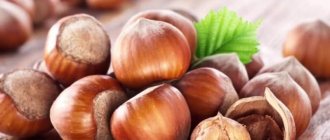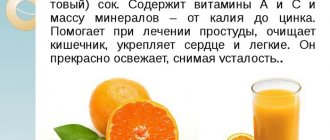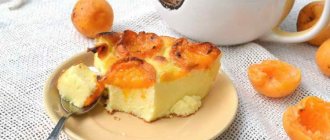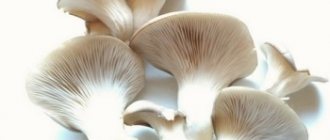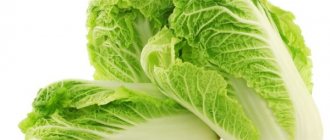A cup of coffee will help you wake up in the morning, invigorate you in the afternoon and give you a burst of strength, energy and mental activity in the afternoon. The delightful aroma and unsurpassed taste have made this drink one of the most popular all over the world. Almost everyone drinks it. However, many people don’t think about how many calories are in coffee, depending on the type and the presence of various additives? Does it have harmful properties and what are they? How much coffee can you drink per day? We will consider the answers to these and many other questions below.
Coffee calories
Calorie content of raw materials per 100 grams, depending on its type:
- granulated, instant coffee - 94 kcal;
- in grains - 223 kcal;
- ground - 201 kcal.
As you can see, the lowest calorie coffee is granulated. On average, take a heaped teaspoon for one cup (200 ml) - this is approximately 8 grams of raw material. It turns out that one cup of granulated instant coffee without milk, sugar, butter or condensed milk contains only 7.5 kcal. By the way, freeze-dried instant coffee has the same calorie content.
Photo source: shutterstock.com
Now let's calculate the energy value of one mug of a drink made from natural beans and ground coffee. To calculate, we again take 1 heaped teaspoon of raw materials per cup. These indicators are adhered to in most recipes for Turks, coffee machines, etc. Accordingly, we will need 8 grams of coffee. We carry out simple calculations and find out that:
- a cup of coffee beans - 17.84 kcal;
- a cup of ground coffee - 16.08 kcal.
However, the nutritional value of coffee in its pure form is low. Let's consider the average indicators of BJU (proteins / fats / carbohydrates) of raw materials per 100 grams:
- granulated, instant coffee - 15/3.5/0;
- in grains - 13.9/14.4/15.6;
- ground - 13.9/14.4/4.1.
As you can see, granulated coffee contains absolutely no carbohydrates, and the amount of protein and fat is low.
Calorie content of types of coffee
If you are on a strict diet, or counting calories to stay in shape, taking into account the calorie content of coffee is just as important as the energy value of any product.
Natural . The calorie content of bean coffee without additives is from 3 to 7 calories per 1 tsp. (220-270 kcal per 100 g) - depending on the variety. Coffee beans contain fats, proteins, carbohydrates, essential oils and minerals. Roasting and grinding reduce the energy value of the grains. Remember that when brewing it also decreases. That is, you can drink brewed coffee without additives without any harm to your figure. For example, the calorie content of 50 ml of Americano is 2 calories, and 100 ml of double espresso is 4 calories.
Soluble . It can be granulated, sublimated and powdered. A teaspoon of instant coffee contains 5 calories (180-230 per 100 g of product).
With sugar . 1 tablespoon of sugar (25 g) contains 57 calories, and a teaspoon - 27. For example, if at home you prefer to drink brewed coffee (2 tsp) from a 250 ml mug, add 2 teaspoons of sugar to 10 (calories of coffee) add 54 (calories of two teaspoons of sugar) and in the end we get 64 calories per mug.
With milk . Depends on the milk. For example, to prepare coffee drinks in coffee shops, as a rule, milk with a fat content of 3.2% is used. 100 ml of this milk contains 58 calories. When preparing it yourself, you can reduce the calorie content by choosing milk with a lower fat content. So, 100 ml of milk with 2.5% fat content contains 50 calories, and 1.5% milk contains 43. To determine the amount of milk, use a measuring cup. For example, to prepare according to the classic recipe (proportion – 2 tsp of ground coffee per 100 ml of water + 100 ml of milk), you can take milk with 2.5% fat content. To calculate calories, you need to add 50 (calories of milk) to 10 (calories of coffee). You get 60 calories per 200 ml.
With sugar and milk . It all depends on the proportions and fat content of the milk. For example, the calorie content of 250 ml of drink (2 tsp of natural coffee per 200 ml of water, 2 tsp of sugar and 50 ml of milk 3.2% fat) will be 90 calories.
With cream . Cream increases the caloric content of any drink. For example, 100 g of cream (10% fat) contains 86 calories, and one tablespoon of cream contains 22. If you add 2 tablespoons of cream (44 calories) to coffee (2 teaspoons per 200 ml of water = 10 calories) - get a drink with 54 calories. And if you also add 2 teaspoons of sugar, there will be 108 calories per 200 ml.
3 in 1 . The calorie content of coffee from sticks significantly exceeds the energy value of coffee without additives. The weight of the Nescafe 3 in 1 stick is 17.2 g. Since the composition includes instant coffee, dry cream and sugar, the calorie content of one stick portion is 70 calories.
Latte . Latte is a cocktail that is prepared according to different recipes. In the traditional sense, it is “espresso”, milk (no more than 60-70 degrees) and milk foam in a ratio of 1:2:1. The energy value depends on the ingredients. To prepare a latte according to the classic recipe (200 ml), 150 ml of 3.2% fat milk and 50 ml of espresso are used. Thus, the calorie content of a sugar-free latte will be 95 calories. Sugar is added as desired, but if you are used to putting 2 teaspoons in your coffee, you get 149 calories in 200 ml of a classic latte.
Cappuccino . Cappuccino is prepared on the basis of espresso with milk (3.2% fat) and milk foam. The concentration of coffee in a cappuccino is higher than in a latte. Traditionally it is served in a 180 ml cup. Thus, a standard serving of cappuccino (without sugar) contains 60 calories.
Glyase . Glace coffee is also prepared on the basis of espresso with ice cream. The energy value of the drink depends on the fat content of the ice cream. As a rule, ice cream with 8% fat content is used. Glace according to the classic recipe (50 ml espresso + 50 g ice cream + 1 tablespoon sugar) contains 170 calories.
To gain harmony, you don’t have to deny yourself such pleasures as coffee drinks. If it contains more than 200 calories, it is better to drink it before 14:00, and ideally for breakfast. Also, do not forget to move more, eat natural foods, drink clean water and do not snack on cakes and sweets. Then excess weight will not threaten your figure.
Calorie content of coffee with sugar
The calorie content of a teaspoon of sugar is 25 kcal. If you add 2 or 3 teaspoons to coffee, the calorie content of the drink will increase by 50 or 75 kcal, respectively. Most often, a couple of teaspoons of sugar are added to a cup of coffee (200 ml).
Photo source: shutterstock.com
Thus, the final calorie content will be as follows:
- granulated, instant coffee - 57.5 kcal;
- in grains - 67.84 kcal;
- ground - 56.08 kcal.
But the nutritional value of sweet coffee will change more compared to bitter coffee without sugar. So, proteins, fats and carbohydrates are equal to 1.29/0.66/9.29 g, respectively.
Calorie content in kcal in a mug of black coffee with and without additives
The fresher the roast, the higher the calorie content of the coffee.
Coffee beans contain sugars and fats, as well as some protein, and if the roast is fresh enough, this will only increase the calorie content. For example, freshly roasted and ground coffee beans without added sugar can provide an increase of 0.5-1 kcal per 200 ml (mug of drink).
The situation with sugar is somewhat different. It all comes down to portions. A teaspoon without a slide accounts for 18-20 kcal, with a larger teaspoon - 26-28 kcal. If you want to add spices to your coffee, keep in mind that even 1 g gives an increase in calorie content:
- dry ginger – 1 kcal/1 g;
- cinnamon – 2.5 kcal/1 g;
- vanilla – 3 kcal/1 g;
- cardamom – 3 kcal/1 g;
- cloves – 3 kcal/1 g;
- pieces of fresh ginger – 3.5 kcal/1 g;
- nutmeg – 5 kcal/1 g.
Coffee with milk: calorie content
Milk is the most popular additive to coffee. It has less calories than sugar, but it is still worth considering. Moreover, it should be remembered that the numbers vary significantly depending on the fat content of the milk. For example, in 20 ml of milk with a fat content of 1.5% there will be 9 kcal, and with a fat content of 3.2% - 12 kcal.
Photo source: shutterstock.com
Calorie content of coffee with milk with 1.5% fat:
- granulated, instant coffee - 16.5 kcal;
- in grains - 26.84 kcal;
- ground - 25.08 kcal.
Calorie content of coffee with milk 3.2% fat:
- granulated, instant coffee - 19.5 kcal;
- in grains - 29.84 kcal;
- ground - 28.08 kcal.
At the same time, the average nutritional value of coffee with milk without sugar is represented by the following indicators: 1.77 g of proteins, 1.39 g of fats and 2.66 g of carbohydrates.
ABC RECOMMENDS
How many calories are in coffee with milk without sugar?
What can you do to reduce the calorie content of your drink?
The number of calories is reduced by reducing various additives.
I would like to say that you need to add fewer additives, but this will change the recipe and lead to a different taste of the drink. Therefore, it is better to switch to less fatty ingredients and sweeteners or make smaller portions. For half a standard cup, you can add half the amount of food, get the same taste, but fewer calories. Perhaps you will like this option more, you will enjoy the taste more slowly and with less harm to the body.
Author: Alena Rogozinskaya
Milk is the most popular additive in coffee. Most people prefer milk coffee drinks, as they are milder in taste and do not feel the bitterness or sourness of coffee. Any coffee shop has a huge selection of coffee and milk-based drinks, much more than pure black drink. Milk is poured hot and cold, whipped, and foam is made. Some add sugar, but most avoid it and drink their drinks as they are served. For those who control their diet, it is important to know the calorie content of coffee with milk without sugar.
Instant coffee: calorie content
We have already noted above that the calorie content of instant coffee (raw material) per 100 g is on average 94 kcal. However, calorie intake can vary significantly depending on the brand of coffee. For example, Nescafe contains only 88 kcal, Jacobs - 101 kcal, and Japanese Moccona - 109 kcal per 100 grams!
Photo source: shutterstock.com
Based on average indicators, the content of proteins, fats and carbohydrates in a similar volume is 9.57/2.29/9.59 g, respectively.
Fireworks additives
In any decent coffee shop, the visitor will be offered to decorate the coffee with various exquisite ingredients, the names and variety of which can sometimes make your head spin. In an amicable way, a person following a diet, of course, is better off giving them up right away. But if you really want to, then you should try to choose the ones that are most harmless for your figure.
A standard set of additives may be as follows:
- sugar;
- milk;
- cream;
- condensed milk;
- ice cream;
- honey;
- chocolate syrup;
- caramel.
The aromatic drink itself does not harm the figure; the situation is much more complicated with additives. Those who are not used to drinking it in its natural form need to be prepared for the fact that the calorie content of a cup of coffee instantly increases. For example, one teaspoon of white sugar contains 24 kcal. Thus, an initially two-calorie cup of black coffee with the addition of two spoons of sugar turns into 50 kcal. But 20 grams of cream with a modest ten percent fat content has a calorie content of 24 kcal. And in the end, coffee with cream will add 26 calories - not fatal if you limit yourself to one morning cup. However, they can be replaced with twenty grams of milk with 1.5% fat content, and then the calorie content of one serving of the drink will be only about 11 kcal.
The range of sugar itself can be quite large. A standard teaspoon holds six grams of granulated sugar. If we talk about refined sugar, it is important to clarify the weight of one cube. Since a five-gram one contains 20 kcal, and a ten-gram one contains, accordingly, twice as much. Brown sugar, which is considered healthier, beats white sugar by just 1 calorie: one teaspoon contains 25 kcal. Some people believe that they can reduce the damage by using honey as a sweetener. But this will only work if one tsp. honey, which contains 32 kcal, replace two tablespoons of sugar.
Advice from nutritionist Irina Shilina Healthy eating is incompatible with strict dietary restrictions, malnutrition and prolonged fasting. Today there is no need to strive for abnormal thinness by depriving yourself of food! Check out the latest weight loss techniques for 2021. Find out the secret ->
The issue of cream is also multifaceted due to its varieties. For example, if you take a standard ten-gram bag of drinking cream with a fat content of 10%, then it contains 12 kcal. A similar package of cream with 20% fat already contains 20 kcal. Dry cream poses a much greater danger to slimness: 10 grams can contain 59 kcal. Moreover, if you choose vegetable powders, then their calorie content varies in the range of 40–45 kcal per 10 grams of product. Plant-based drinking cream is much more modest in this regard: only 20–30 kcal.
You should be careful when choosing milk as a supplement.
| Varieties | Energy value |
| Pour 20 grams of baked milk. | They will immediately give your morning cup an extra 17 kcal. |
| A similar amount of milk with a fat content of 1.5%. | Another 9 kcal. |
| 2,5 %. | Plus 10.8 kcal. |
| 3,2 % | Add 12 kcal when counting. |
| You can also use skim milk. | In this case, the calorie content of 20 grams reaches only 6.4 kcal. |
Very sweet condensed milk is loved by many as an additive to coffee, as it immediately solves two problems: it makes it sweet and milky. But the calorie content of one teaspoon of condensed milk is quite impressive and amounts to 36 kcal, and a tablespoon includes all 74 kcal. The same caution applies to fancy additives like chocolate syrup and caramel. 20 grams of chocolate syrup contains 56 kcal, and the same amount of caramel contains 55 kcal.
Ice cream is used to make ice cream. The final calorie content of the drink largely depends on the type of cold delicacy. For example, a standard fifty-gram ball of cream contains 92 kcal, and the same amount of ice cream contains 113 kcal.
Coffee latte: calories
There is no single standard for a coffee cocktail - it is made in different ways, in cups from 120 to 480 ml. The calorie content of a latte directly depends on the volume and type of milk used (cow's, almond, soy, coconut or oat milk), as well as on additives (sweeteners, syrups, fillers). However, the average nutritional value of a latte per 100 grams is about 105 kcal, and BJU is 5.02/5.43/9.22 grams, respectively.
Photo source: shutterstock.com
Let's look at the calorie content of latte depending on the brand:
| Name | Volume, ml | Kcal |
| CoffeeHouse, classic | 250 | 111 |
| CoffeeHouse, low fat | 250 | 73 |
| Shokoladnitsa, light | 320 | 125 |
| Chocolate girl | 400 | 220 |
| Coffee mania | 330 | 156 |
| Starbucks, caramel | 480 | 250 |
| Starbucks, with nuts | 480 | 190 |
| McDonald's | 360 | 140 |
| McDonald's | 480 | 210 |
An interesting variety of latte is flat white coffee. Traditionally it is prepared in a thick-walled porcelain cup. Its distinctive feature is voluminous snow-white foam.
How many calories are in a latte?
How many calories are in coffee with milk?
An additive in the form of milk or cream only gives the coffee drink its characteristic softness of taste. However, milk in coffee usually means extra calories. Exactly how much depends on the fat content of the milk
. So, for example, 100 grams of milk with a fat content of 1 percent contains 42 kilocalories; a product with a fat content of 2.5 percent already contains 54 kilocalories.
How many calories are in one serving of milk added to coffee?
The answer to this question directly depends on how much milk you add to your coffee. If it's a couple of teaspoons
(one such spoon is 5 grams of milk), then you add literally 5 kilocalories of nutritional value to the finished drink.
In other words, a cup of drink (for example, espresso) with two teaspoons of milk contains approximately 22 kilocalories. Add two tablespoons of sugar there - you get a total of about 68 kilocalories
. A cup of instant coffee without sugar and with milk in approximately the same proportion - about 10 kilocalories; with sugar – 56 kilocalories.
By the way, why exactly two spoons? We took the standard packaging of portioned coffee cream as a basis - it is usually packaged in 10 gram quantities
. The calorie content of such cream is much higher - 10 percent cream contains 118 kilocalories per 100 grams of product.
Coffee with cream: calories
Many people cannot imagine their morning without coffee with cream. However, 100 ml of cream with 20% fat content contains approximately 205 kcal! 10 ml is usually added to a cup of coffee, increasing the calorie content of coffee by 20.5 kcal.
Photo source: shutterstock.com
Thus, the calorie content of coffee with cream (20%) without sugar is:
- granulated, instant coffee - 28 kcal;
- in grains - 38.34 kcal;
- ground custard - 36.58 kcal.
The average indicators of BJU per 100 grams of coffee with cream are presented as 1.91/5.91/9.94 grams, respectively.
With sugar and milk
Coffee with milk and various coffee and milkshakes, supplemented with granulated sugar or sweet toppings, should not be perceived as drinks, but as a delicacy. A sweet cappuccino or latte with cake is an unaffordable luxury for those watching their weight.
For example, a sweetened cappuccino that is 2/3 milk contains 150 kcal per 200 ml cup.
- More on the topic: Is it possible to drink coffee on a diet?
The calorie content of coffee with milk (20 ml) and sugar (1 teaspoon) is about 30 kcal.
Instant coffee with milk and sugar contains about 50 kilocalories.
Cappuccino coffee: calories
Cappuccino is a delicious drink containing espresso, sugar and cream. Naturally, its calorie content is extremely high. One 150 ml serving contains 201 kcal.
Photo source: shutterstock.com
Let's look at the calorie content of cappuccino depending on the brand:
| Name | Volume, ml | Kcal |
| CoffeeHouse, classic | 250 | 102 |
| CoffeeHouse, low fat | 250 | 68 |
| Burger King | 300 | 144 |
| Starbucks, cappuccino grande | 480 | 140 |
| McDonald's | 200 | 75 |
| McDonald's | 300 | 125 |
Americano coffee: calorie content
Many people prefer to treat themselves to Americano coffee. And it’s not surprising, because it is extremely aromatic, but not too strong. Essentially, the drink project is espresso and water. It does not contain sugar or cream, and therefore the calorie content of the drink is not high at all.
Photo source: shutterstock.com
Let's look at the caloric content of Americano depending on the brand:
| Name | Volume, ml | Kcal |
| CoffeeHouse, classic | 250 | 91 |
| CoffeeHouse, low fat | 250 | 62 |
| Coffee mania | 330 | 131 |
| Chocolate girl | 400 | 190 |
| McDonald's | 360 | 105 |
| McDonald's | 480 | 168 |
Composition and nutritional value of coffee
The nutritional value of the drink is represented by the unique chemical composition of coffee beans, which includes the following beneficial substances:
- alkaloids (trigonelline and caffeine);
- vitamins P, B2, B3 and B5;
- tannins (tannins);
- essential oils;
- mineral salts and trace elements (potassium, phosphorus, calcium, iron, manganese, nitrogen, etc.);
- acids (chlorogenic, quinic, citric, caffeic, oxalic, etc.).
It is also worth considering the fact that during roasting the proportions of elements contained in the grain change and new compounds are formed (for example, vitamins PP). Depending on the type of coffee beans and the degree of roasting, the composition of the drink also differs.
Daily coffee consumption
The daily intake of caffeine for adult women and men is 400 mg, which roughly corresponds to 3 glasses of an invigorating drink. With this volume, no adverse reactions from the central nervous and cardiovascular systems are observed.
Photo source: shutterstock.com
Scientists (children under 16 years of age and pregnant women) caffeine intake should not exceed 300 mg per day, and ideally no more than 200 mg. However, according to the results of statistical studies, modern people consume significantly more caffeine than recommended, and in most cases there are no side effects. But it is still worth remembering that excessive coffee consumption puts a high burden on the kidneys and heart.
ABC RECOMMENDS
How many cups of coffee a day prolongs life?
The benefits and harms of coffee
Why do doctors sometimes recommend including coffee in your diet, while some are asked to refrain from drinking the aromatic drink? The benefits of coffee for the body are invaluable and consist of the following properties:
- increased performance;
- relief from muscle pain after exercise;
- increase in the number of liver enzymes;
- reducing the risk of Alzheimer's disease, type 2 diabetes, gout and cancer;
- protection against free radicals that destroy healthy cells and accelerate the aging process;
- improving gallbladder function and reducing the risk of gallstone formation;
- antibacterial effect, which helps reduce the risk of caries and other dental diseases.
All of the above properties are more characteristic of boiled black coffee, without sweeteners and cream. Green coffee is also considered beneficial.
Photo source: shutterstock.com
But the popular drink can bring more than just benefits. Sometimes it can cause harm if there are contraindications. The harm of coffee to human health is manifested in the following properties:
- disruption of the stomach and pancreas (especially if you drink coffee on an empty stomach);
- difficulty in the work of platelets, which help stop bleeding by clogging the damaged vessel;
- increased blood pressure;
- increased risk of osteoporosis and insomnia (if you drink coffee at night);
- increased anxiety and stress.
Coffee can be especially harmful to women's health, as it can provoke mastopathy. With this disease, lumps form in the mammary glands, which increase in size and hurt during menstruation. All of the above negative properties of the drink manifest themselves mainly when it is consumed on an empty stomach or when the daily norm is exceeded. Don't forget about this if you like to treat yourself to black coffee, latte or espresso.
ABC RECOMMENDS
Not so harmful: 7 myths about caffeine that are still believed






